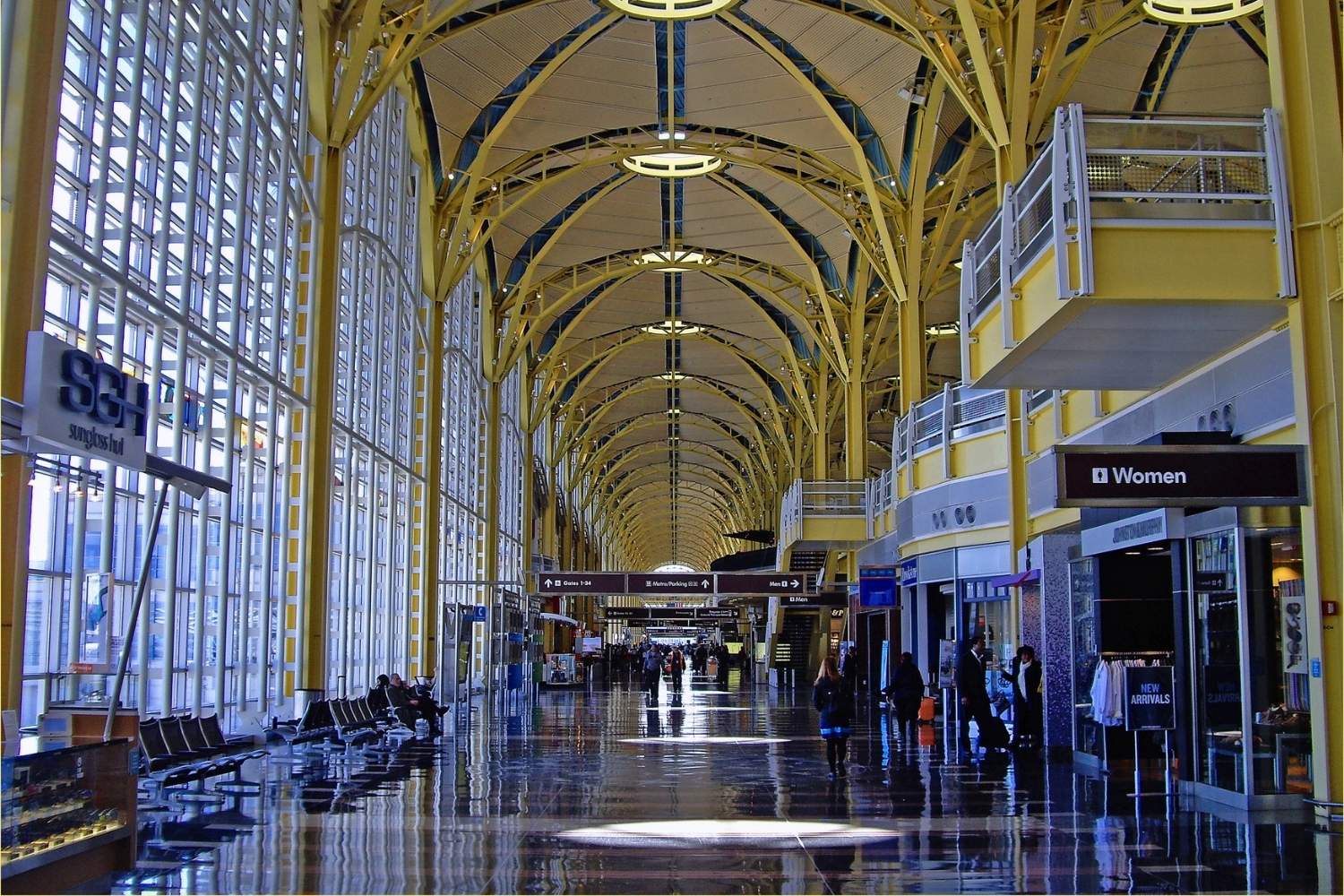
Did you know that Ronald Reagan Washington National Airport, commonly known by its airport code DCA, is one of the busiest airports in the United States? Located just a few miles from downtown Washington, D.C., DCA offers a unique blend of history, convenience, and modern amenities. Opened in 1941, this airport has seen countless changes and expansions over the decades. From its stunning Art Deco architecture to its role in U.S. aviation history, DCA is more than just a gateway to the nation's capital. Whether you're a frequent flyer or just curious about airports, these 25 facts about DCA will give you a new appreciation for this iconic travel hub. Buckle up and get ready to learn something new!
25 Facts about DCA (Airport Code)
Ronald Reagan Washington National Airport, commonly known as DCA, is a bustling hub of activity. Located just a stone's throw from the heart of Washington, D.C., this airport has a rich history and some unique features. Let's dive into some fascinating facts about DCA.
Historical Background
DCA has a storied past that reflects its importance in American aviation history.
- Opened in 1941: DCA began operations on June 16, 1941, serving as a crucial gateway to the nation's capital.
- Named after Ronald Reagan: Originally called Washington National Airport, it was renamed in 1998 to honor the 40th President of the United States.
- Built on reclaimed land: The airport was constructed on land reclaimed from the Potomac River, showcasing impressive engineering feats of the time.
- Designed by architect Paul Philippe Cret: The original terminal was designed by this renowned architect, blending Art Deco and modernist styles.
Unique Features
DCA stands out for several reasons, from its location to its operations.
- Proximity to downtown D.C.: Located just 3 miles from downtown Washington, D.C., it offers unparalleled convenience for travelers.
- Restricted airspace: Due to its proximity to key government buildings, DCA has some of the strictest airspace regulations in the country.
- River Visual Approach: Pilots often use this scenic approach along the Potomac River, offering passengers stunning views of the capital.
- No international flights: DCA primarily handles domestic flights, with a few exceptions for pre-cleared flights from select Canadian cities.
Operations and Services
The airport's operations and services cater to millions of passengers each year.
- Three terminals: DCA has three terminals (A, B, and C), each offering a range of amenities and services.
- Over 24 million passengers: In 2019, DCA handled over 24 million passengers, making it one of the busiest airports in the U.S.
- Hub for American Airlines: DCA serves as a hub for American Airlines, which operates numerous flights daily.
- Public transportation access: The airport is easily accessible via the Washington Metro's Yellow and Blue lines.
Environmental Initiatives
DCA is committed to sustainability and environmental responsibility.
- LEED-certified buildings: Several buildings at DCA have received LEED certification for their environmentally friendly design and construction.
- Green initiatives: The airport has implemented various green initiatives, including energy-efficient lighting and recycling programs.
- Electric vehicle charging stations: DCA offers charging stations for electric vehicles, promoting the use of eco-friendly transportation.
Amenities and Services
Travelers can enjoy a range of amenities and services at DCA.
- Free Wi-Fi: Passengers can stay connected with complimentary Wi-Fi throughout the airport.
- Art exhibits: The airport features rotating art exhibits, showcasing works by local and national artists.
- Pet relief areas: DCA provides designated areas for pets to relieve themselves, ensuring a comfortable experience for travelers with animals.
- Variety of dining options: From fast food to sit-down restaurants, DCA offers a wide range of dining choices to suit every palate.
Security and Safety
Safety and security are top priorities at DCA.
- TSA PreCheck: The airport offers TSA PreCheck lanes, allowing expedited security screening for eligible passengers.
- Advanced security technology: DCA employs state-of-the-art security technology to ensure the safety of all passengers and staff.
- Emergency response teams: The airport has dedicated emergency response teams trained to handle various situations, from medical emergencies to security threats.
Future Developments
DCA continues to evolve, with several exciting developments on the horizon.
- Project Journey: This multi-year construction project aims to enhance the passenger experience with new security checkpoints and a new concourse.
- Sustainability goals: DCA is working towards ambitious sustainability goals, including reducing its carbon footprint and increasing energy efficiency.
- Expanded services: Future plans include expanding services and amenities to better serve the growing number of passengers.
DCA remains a vital part of the nation's transportation network, offering convenience, history, and a commitment to sustainability.
Final Look at DCA Facts
DCA, or Ronald Reagan Washington National Airport, is packed with history and interesting tidbits. From its strategic location near downtown Washington, D.C., to its unique architectural design by Eero Saarinen, DCA stands out. It’s not just about flights; the airport offers stunning views of the nation's capital and the Potomac River.
Security measures are tight due to its proximity to key government buildings, making it one of the most secure airports in the U.S. The airport also has a rich history, having been dedicated by President Franklin D. Roosevelt in 1941.
Whether you're a frequent flyer or just curious, DCA's blend of modern amenities and historical significance makes it a fascinating subject. Next time you pass through, take a moment to appreciate the stories and facts that make this airport unique.
Was this page helpful?
Our commitment to delivering trustworthy and engaging content is at the heart of what we do. Each fact on our site is contributed by real users like you, bringing a wealth of diverse insights and information. To ensure the highest standards of accuracy and reliability, our dedicated editors meticulously review each submission. This process guarantees that the facts we share are not only fascinating but also credible. Trust in our commitment to quality and authenticity as you explore and learn with us.
